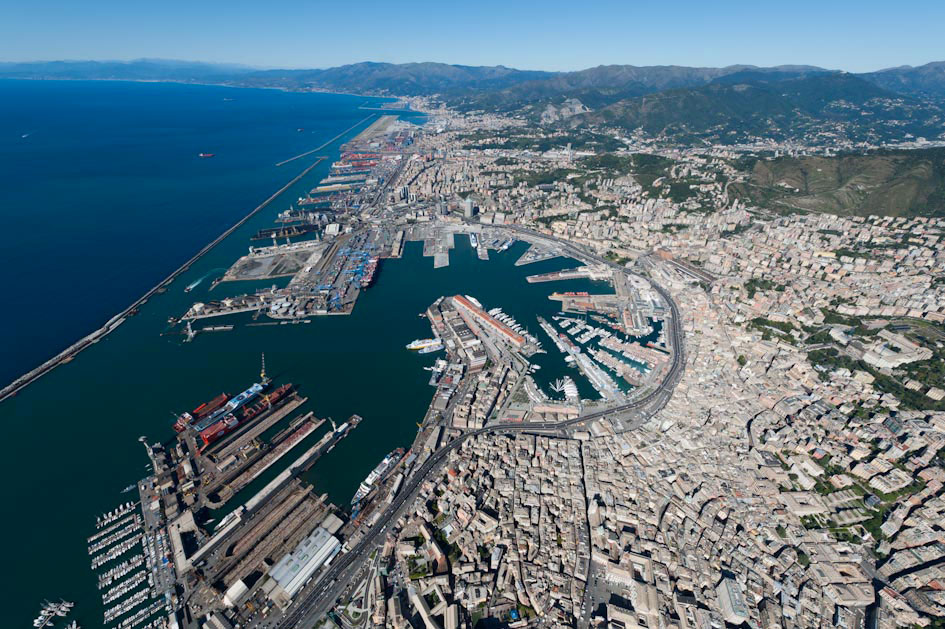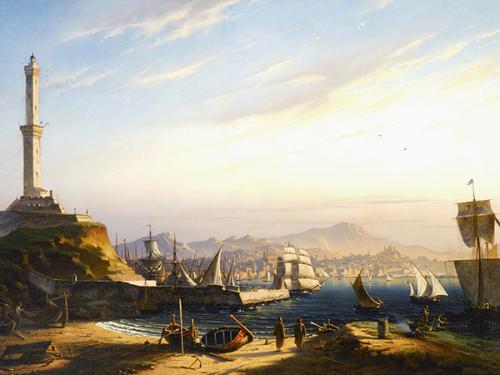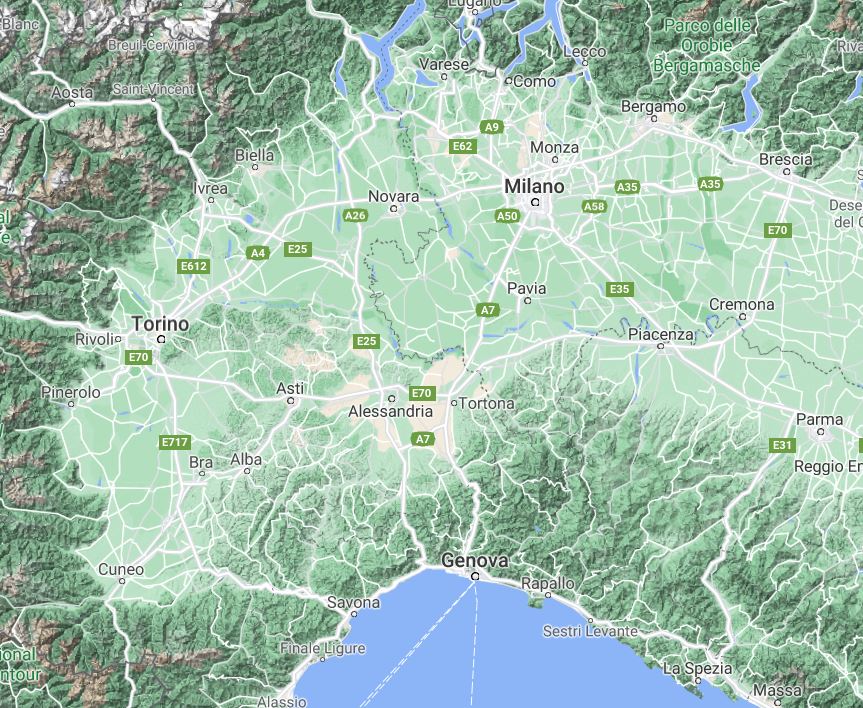
1/How could service look like on the broad Northeast corridor if we apply the multi-tiered service patterns (and fares) currently in use in N-Italy and in the Germanic world?
A long thread with some random thoughts of how a better region-wide NE rail service should look like
A long thread with some random thoughts of how a better region-wide NE rail service should look like

2/ This thread comes after some exchanges in here over time and the discover of this private sector proposal for an improved Northeast corridor, that have some good points but fails at the overall picture.
railwayage.com/passenger/inte…
railwayage.com/passenger/inte…
3/ Let's start from the inspiring model. Both Germany and Italy have a strongly multitiered rail service pattern that particularly suits the travel demand of "megalopolis", i.e. continuously urbanized areas with many important primary and secondary nodes, as the US Northeast. 





4/ I will focus on N-Italy because I know it better.
The two macro categories of services are:
- long distance, both on HSR and legacy lines with 120-130km/h top speed. partly market/partly subsidized
- regional, fully subsidized service with avg speed b/w 40-100km/h
The two macro categories of services are:
- long distance, both on HSR and legacy lines with 120-130km/h top speed. partly market/partly subsidized
- regional, fully subsidized service with avg speed b/w 40-100km/h
5/ Long distance itself is split b/w:
- market rate HSR (Frecciarossa/Italo) using mostly HSR infras with stop every 100-200 km or non-stop (MI-RO)
- Other partly market rate/partly subsidized on weaker markets (Intercity, Frecciabianca) with closer stops every 40-80km.
- market rate HSR (Frecciarossa/Italo) using mostly HSR infras with stop every 100-200 km or non-stop (MI-RO)
- Other partly market rate/partly subsidized on weaker markets (Intercity, Frecciabianca) with closer stops every 40-80km.

6/ Those corresponds roughly to Acela's current service pattern or, better, to a possible Acela service pattern if a proper HSR infrastructure was built, separating a core BOS-WA HSR service stopping in NY-PHI-BA and other more capillary services using the legacy line or a mix. 

7/ Those services generally don't cover regular daily commuter demand even if there are monthly passes for super-commuters or frequent users. Those are pricey services, that might use yield management pricing to maximize occupancy rates and normally need reservation.
8/ But the real place where there is room for improvement in the NE corridor is on proper "regional" services. N-Italy, like Germany and Switzerland, has a 3-tiered regional service:
- Suburban (S or SFM, i.e. S-Bahn)
- Regio (R)
- Fast Regional or RegioExpress (RV or RE)
- Suburban (S or SFM, i.e. S-Bahn)
- Regio (R)
- Fast Regional or RegioExpress (RV or RE)

8/ Their main market target is daily commuting and non-systematic daily trips within the broad region. They are subsidized and have often distance-based fixed fares and monthly passes. But the respective role they play in the overall network and the targeted demand is different 

9/ Suburbans provide through service in the urban core to/from the nearer hinterland (30-40km), with high frequency in superposed central trunks. This is what local suburban services of Septa, LIRR, MBTA etc. could look like if they where operated as proper RER/S-Bahn. 

10/ Suburbans are the kind of regional rail service patterns most NA transit advocates are familiar with and that should be implemented in many large metros throughout NA.
The other two are less talked about. But, I think, are as relevant especially in the BOWASH megalopolis
The other two are less talked about. But, I think, are as relevant especially in the BOWASH megalopolis
11/ Regional (R) provides a medium frequency dense service (30-60') in outlying areas and fast service in the core, working as an express. In Lombardy, they mostly end at stub end stations in Milan, but in other contexts without a dominant city they run through acting as Suburban 

12/ Regionals are similar, in a way, to some express commuter services operated by state transit agencies in the NE corridor, like the LIRR does for far-reaching commuter services, IIRC. But, unlike those ones, proper regionals operate also as all-day locals in feeder lines
13/ But the real missing piece of the NE corridor puzzle is the RegioExpress category. RE cover the mobility need of occasional users + supercommuters that need a moderately fast but not pricey connection between regional centers. It's what ties the region's centers together
14/ RegioExpress covers the gap between proper intercity (a stop every 60-80km) and regional, with stops every 15-30 km, hourly or bi-hourly service and avg speed of 80-100km/h and top speed of 160 km/h and regional level subsidized fares. 

15/ Unlike S-Bahn, that is better operated with subway-like rolling stock, RE are normally operated (or should be) with bi-level EMUs with enough sitting space suitable for longer trips (>45'), toilets, etc., but without the luggage storage, bar, etc. typical of proper LD. 





15/ A RE-like service in the NE corridor area could have trains calling at main secondary and tertiary nodes, places like Trenton, New Brunswick, Stamford, Bridgport, etc. Those are similar to what Amtrak call "regional" in the NE, but should exist on other corridors too.
16/ For example, there could be hourly RE calling at major centers every 15-30 km going from Long Island up the Hudson Valley to Albany, Long Island to NJ, along the CT-RH shore to NJ, Springfield-Hartford-NH-NYC etc. etc., all using legacy lines.
17/ The idea is that train service must cover a wide array of mobility needs in a polycentric, densely populated region that has some main hubs but also many secondary ones that have their proper demand. That is what geographer call a megalopolis. NE corridor is a typical one.
18/ Of course, those service patterns should be adapted to the characteristic of each sub-area, but it's important to stop thinking of a dual system, where Amtrak covers long distance and local transit agencies do Regional Rail, and start envision a region-wide, multi-tiered one.
19/Looking at the rail service pattern of other multipolar megalopolis, like the Megalopoli Padana, the Rhur, the Tokaido, should definitely inspire US planners and policy-makers toward a more comprehensive approach that works best for the particular urban pattern of the NE.
• • •
Missing some Tweet in this thread? You can try to
force a refresh

















